Dr. Damodar Dharmananda Kosambi
(31 July 1907 – 29 June 1966)

Dr. D. D. Kosambi was an Indian mathematician, statistician, philologist, historian and polymath who contributed to genetics by introducing Kosambi map function. In 1944 he published an article titled “The Estimation of Map Distance from Recombination Values” in ‘Annals of Eugenics’ (https://onlinelibrary.wiley.com/doi/epdf/10.1111/j.1469-1809.1943.tb02321.x) in which he introduced what later came to be known as Kosambi map function. His contribution in genetics is remembered after name along with a mathematical expression as Haldane function. As per his equation genetic map distance(w) is related to recombination fraction (θ) in the following way.
w = 1/4 ln[(1+2θ)/(1-2θ)]
Kosambi’s mapping function adjusts the map distance based on interference which changes the proportion of double crossovers.
In the commemoration of his contributions in Genetics, a joint international lecture series webinar has been organized by SPPU & NABI on 31 July-2 August 2020.
Schedule of Webinar
31st July 2020 (45 Min each, 5 talks, Science leaders)
Introductory remarks
Dr. Rupesh Deshmukh
Inaugural Address
Hon’ble Vice-Chancellor, SPPU, Pune
Inaugural Talk by Chief Guest
Dr. T. R. Sharma, Deputy Director General (Crop Science), ICAR, India.
Plenary Talk by Guest of Honor
Dr. N. K. Singh, National Professor and Director, NIPB, India .
31 st July 2020 (45 min each 3 talks, Lead Scientist)
Session 1 : (Chair Prof. Avinash Ade, Co-Chair Prof. A. B. Nadaf)
- Prof. SB Verulker, HoD, PMBB, IGKV, India
- Dr. Tri Voung, Senior Scientist, University of Missouri, USA
- Prof. Yadong Zhang, Scientist, JAAS, China
1st August 2020 (30 min each 6 talks, Young Scientist)
Session 1 : (Chair Dr. Humira Sonah, Co-Chair Akshay Sakhare)
- Dr. Javid A. Bhat, Postdoctoral Fellow, Nanjing Agricultural University, China
- Dr. Vikas Kumar Singh, Scientist, International Rice Research Institute (IRRI), India
- Dr. Gunvant Patil, Assistant Professor, Texas Tech University, USA
Session 2 : (Chair Prof. Avinash Kamble, Co-Chair Dr. Sajad Zarger)
- Dr. Suhas Shinde, Associate Graduate Faculty, West Virginia State University, USA
- Dr. Suhas Kadam, Postdoctoral Fellow, University of Missouri, USA
- Dr. Gaurav Agrawal, Postdoctoral Fellow, CPMRU, Tifton, USA
2nd August 2020 (20 min each, 12 talks, Ph.D. Scholars)
Session 1 : (Chair Dr. Sweta Sinha, Co-Chair Ms. Sonali Chandanshive)
- Dr. Rupesh Tayde, Kyungpook National University, Korea
- Ms. Surbhi Kumawat, Punjab University, Chandigarh, India
- Ms. Vacha Bhat, Savitribai Phule Pune University, Pune, India
- Mr. Gaurav Raturi, Punjab University, Chandigarh, India
Session 2 : (Chair Dr. Jawahar Katara, Co-Chair Ms. Sanskriti Vats)
- Mr. Anurag Dawre, NIPGR, New Delhi
- Ms. Gunashri Padalkar, Punjab University, Chandigarh
- Mr. Yogesh Sharma, NABI, Mohali, India
- Mr. Rushil Mandlik, NABI, Mohali, India
Session 3 : (Chair Dr. Juhi Chaudhari, Co-Chair Mr. Virender Kumar)
- Ms. Alisha, Adam Mickiewicz University, Poland
- Mr. Himanshu Yadav, NABI, Mohali, India
- Mr. Trevor Weiss, Zhang Laboratory, USA
- Mr. Zahoor A. Mir, NAIP, New Delhi, India
Session 4 : (Chair Dr. Hasthi Ram , Co-Chair Dr. Shaila Chavan)
- Ms. Nitika, NABI, Mohali, India
- Mr. Vinaykumar R., DYSPUHF, Nauni, India
- Dr. Atul Sathe, IGKV, Raipur, India
- Mr. Amit Kumar, NABI, Mohali, India
Concluding Remark and Felicitation
Dr. Vitthal Baravkar
About Speakers
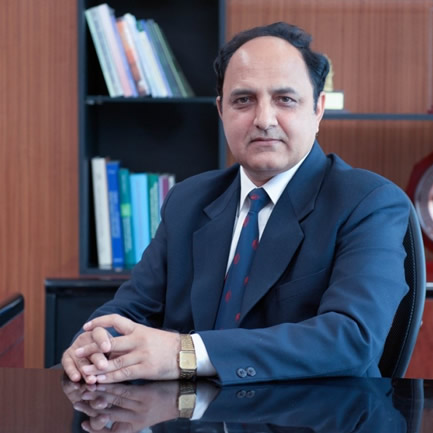
Prof. Tilak Raj Sharma
Deputy Director General (Crop Science) Indian Council of Agricultural ResearchMinistry of Agriculture and Farmers Welfare, Govt of India Krishi Bhawan, New Delhi, India
(ddgcs.icar@nic.in)
Brief introduction
Prof. Tilak Raj Sharma, a well-known Plant Molecular Biologist, is presently leading the Indian agriculture sector as Deputy Director General (Crop Science), ICAR, Government of India. Earlier he contributed in the establishment and development of several prominent Indian institutes like National Agri-Food Biotechnology Institute, Mohali (Executive Director), Center of Innovative and Applied Bioprocessing (Chief Executive Officer), National Institute for Plant Biotechnology (Project Director) and Indian Institute of Agricultural Biotechnology (OSD). Prof. Sharma is an elected fellow of the National Academy of Agricultural Sciences (NAAS), the National Academy of Sciences (NASc), and the Indian National Science Academy (INSA). He is a recipient of numerous prestigious awards, including, Rafi Ahmed Kidwai Award-ICAR, NASI-Reliance Industries Platinum Jubilee Award, J C Bose National Fellowship, SERB, DST and the National Bioscience Award for Career Development, one of the highest Indian science awards from the Department of Biotechnology, Government of India. His major research interests are in the areas of Genomics and plant disease resistance. Dr. Sharma has contributed extensively to the improvement of rice for over 30 years and cloned a new rice blast resistance gene Pi54 which has been deployed in many rice varieties. Dr. Sharma has published more than 150 research papers, filed six Indian patents (three granted), and associated in the development of three blast-resistant rice varieties Pusa 1637, HPR2880, and PusaSambha.
Title: Inaugural talk on Application of New Plant Breeding Approaches for Food and Nutritional Security of India
Summary of talk
Application of scientific methods has played an important role in the growth and development of humanity throughout the world. Indian agriculture has witnessed a great transformation since independence in 1947 till date. After independence, the country was undergoing a severe food crunch, affecting mostly the poor people in the country. The persistent hunger was curtailed up to some extent with the supply of US wheat through the PL480 program. But it was not a sufficient and sustainable solution for the widespread hunger, malnutrition, and poverty. It was all because of the political will, and the vision of Indian Agricultural Scientists who introduced dwarf Mexican wheat in India through large scale systematic and scientifically sound field demonstrations in the farmer's fields. Because of this, we witnessed Green Revolution in the early 70s with the increased production in rice and wheat. Not only dwarf wheat and rice varieties played important role in attaining Green Revolution, but the growth of other agricultural approaches like application of fertilizers, providing irrigation and crop protection measures were equally responsible for this unprecedented growth. All this could happen because of the application of science and technological innovation in growing crops. However, with the increase in population, we need to double agricultural production. Presently there are many biotic and abiotic stresses which adversely affect the yield of various crops. With the advent of new plant breeding (NPB), approaches, India has witnessed an exponential growth in cotton production after the introduction of Bt cotton developed by transgenic approach. This has improved the lives of millions of cotton growers and related individuals and industries. Besides, Genomics and marker-assisted selection (MAS), which is Non- GM approach of improving crop varieties, is being used extensively for the improvement of rice, wheat, mustard, and many other crops in India which is being supplemented with now genome editing approach. Also plant tissue culture is a multi-million industry in India and many horticultural and floricultural crops are being clonally multiplied through plant tissue culture and commercially available to the farming community. The application of NBT in various sectors of Indian Agriculture is playing an important role in sustainable crop production, hence we need to harness the benefits of these technologies for the welfare of the farming community.
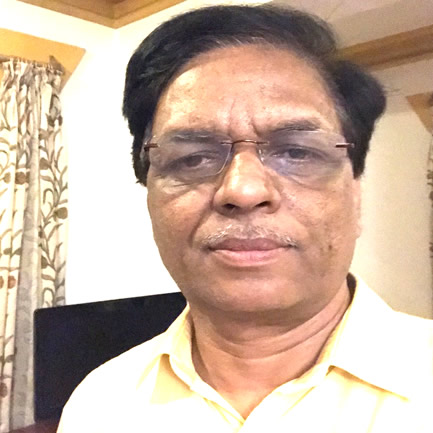
Prof. Nagendra Kumar Singh
National Professor, B. P. Pal Chair and Director, National Institute for Plant BiotechnologyPusa Campus, New Delhi-110012, India
(nksingh[at]nrcpb[dot]org)
Brief introduction
Prof. Nagendra Kumar Singh, one of the prominent Indian scientists, is well known for his contributions in crop genomics. He is presently ICAR-National Professor Dr. B. P. Pal Chair at the National Institute for Plant Biotechnology (NIPB), New Delhi. Prof. Singh was born in Rajapur village of the Mau district of Uttar Pradesh. He completed his B.Sc. (Ag.) in 1978 and M.Sc. (Ag.) Genetics and Plant Breeding in 1980 from the Institute of Agricultural Sciences, Banaras Hindu University (BHU), Varanasi. He is the recipient of the University gold medal in both B.Sc. (Ag.) and M.Sc. (Ag.). He earned his doctoral degree from Waite Agricultural Research Institute, University of Adelaide, Australia in 1985. During his Ph.D., he worked on "Structure and Genetic control of endosperm proteins in wheat and rye". In 1986 he received the prestigious CSIRO Post-Doctoral Award and in 1988 he was awarded Queen Elizabeth II Award, by the Australian government for his post-doctoral research. Subsequently, he has received several awards from various institutions and organizations in India for his contribution in the field of agriculture. Prof. N.K. Singh is very well known for his research in crop genomics and biotechnology. He has led several multi-institutional projects having researchers from different parts of India and the world to improve agronomic traits in rice, wheat, pigeonpea, tomato, and mango. His contribution to the field of agriculture includes a decoding of rice, wheat, tomato, pigeonpea, jute and mango genomes, characterizing wheat seed storage proteins and determining their effect on wheat quality, mapping of genes controlling salt tolerance and basmati quality traits in rice and comparative analysis of rice and wheat genomes.
Title: Plenary talk on “Decoding the genomes of crop plants uniquely important for India”
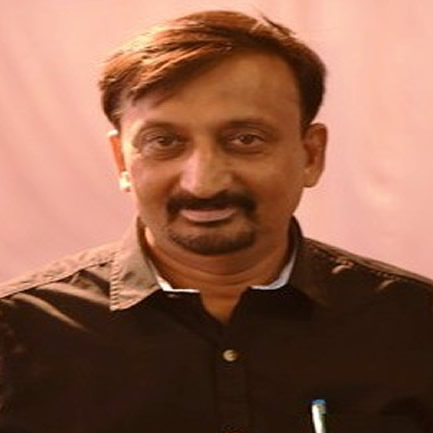
Prof. Satish Verulkar
Professor and Head, Plant Molecular Biology and Biotechnology (PMBB)Indira Gandhi Krishi Vishwavidyalaya (IGKV), Raipur (CG) 492012, India
satishverulkar@gmail.com
Brief introduction
Prof. Satish Verulkar is a well-known rice breeder in India. Presently, he is a Head of Plant Molecular Biology and Biotechnology Division at Indira Gandhi Agriculture University (IGAU), Raipur, India. He is one of the pioneer researchers who established foundation for molecular breeding in India. He has identified several quantitative trait loci (QTLs) for water stress tolerance related traits in rice. His vision and ambitions to develop stress-tolerant rice varieties has helped to improve rice cultivation in drought-prone areas.
Title: Identification and introgression of QTLs for genetic improvement of rice for Rainfed Ecosystem
Summary of talk
At IGKV, Raipur we are extensively using Marker Assisted Selection (MAS) in our Rice Improvement Program. In this presentation, I will try to acquaint you with our work on 1. Simultaneous Identification and Selection for Multiple QTLs, 2. Improvement of Mega varieties - incorporation of Major QTL(s) and 3. Transfer of Major Gene(s) and Pyramiding.
The rainfed ecosystem is highly variable, erratic, and unpredictable in nature. Water stress along with associated nutrient stress are prominent yield-limiting factors but again highly unpredictable in its occurrence. Drought tolerance and yield per se under normal condition are highly negatively correlated, and therefore simultaneous improvement of yield under normal as well as water stress condition is a difficult task but is the major objective of breeding for the rainfed ecosystem. Considering water and labor crises, area under direct-seeded rice cultivation has increased and in the coming years, the area under direct-seeded will certainly increase. At Indira Gandhi Krishi Vishwavidyalaya (IGKV), Raipur, we have designed the comprehensive program integrating conventional breeding with genomic tools for identification donors with good breeding value, developing mapping and breeding populations, precise phenotypic evaluation, identification of QTLs for grain yield per se, nutrient use efficiency & root traits, MAS based introgression of common QTLs for simultaneous improvement of grain yield under all conditions, along with critical multi-location evaluation for identification of most stable high yielding genotypes. This has resulted in the identification of some of the advanced breeding lines which are performing exceedingly well under multi-location trials of state, at the national level, and more importantly at farmers field.
Over the years we have observed that under direct seeding of rice, at about 25-35 days of sowing if there is water stress, the symptoms of nutrient deficiency/toxicity are more prominent, and warrant more attention than drought tolerance per se. We started working on nitrogen (N) and phosphorus (P) use efficiency. Under water stress/aerobic conditions in soil, nitrate form of N is predominant compared to ammonical form, and rice has better ammonical use efficiency than nitrate use efficiency, a typical paradox situation. Also, a line of study has been initiated for understanding soil microbiome associated with conversion of ammonical form to nitrate form. The results of these studies will be presented. I will also be presenting our work related to Improvement of Mega varieties (Swarna) - incorporation of Major QTL(s) and Transfer of Major Gene(s) and Pyramiding, which will give a glimpse of applications of MAS in crop improvement.

Dr. Tri D. Vuong
Senior Scientist,Molecular Genetics and Soybean Genomics Laboratory, Division of Plant Science, University of Missouri, USA
vuongt@missouri.edu
Brief introduction
Dr. Tri D. Vuong is a senior scientist and has a highly recognized professional career in plant genetics, genomics, and molecular breeding, particularly in soybeans. He received his B.S. degree in Agronomy from the University of Can Tho (UCT), Vietnam, and joined the UCT as a lecturer. In 1993, he received a Research Assistantship to pursue his master's and doctoral degree education in the Department of Crop Sciences, the University of Illinois-Urbana Champaign (UIUC), Illinois, USA. In 1998, upon the completion of his Ph.D. program, he joined the Soybean Pathology Laboratory, USDA-ARS, and UIUC as a postdoctoral associate, studying the genetics of resistance to soybean diseases. In 2006, he joined the National Center for Soybean Biotechnology (NCSB), the University of Missouri (MU), Columbia, MO, as a senior research scientist. His research efforts focused on the genetics of resistance to soybean nematodes, soybean rust, and Phytophthora root rot diseases. Since 2010, he has been involving in a soybean molecular breeding program, aiming to the development of new soybean germplasm and varieties with improved seed composition traits
With extensive experiences and expertise in soybean genetics, Dr. Vuong has published more than 40 articles in peer-reviewed journals. Among these, an excellent article published in Proceedings of the National Academy of Sciences of the United States of America (PNAS) in 2013. He is either a senior or co-author contributing to five book chapters on soybean genomics, soybean molecular breeding, soybean nematodes, etc. He has served as a reviewer of Crop Science, Theoretical and Applied Genetics, the Plant Genome, Molecular Breeding, BMC Genomics, PloS One, and Plant Breeding journals. With his colleagues, he is a co-author of a US patent on quantitative trait loci (QTL) and genetic markers for resistance to soybean cyst nematode (US No. 61/278,233).
Dr. Vuong was named Outstanding Teacher in the Department of Agronomy, UCT. He was selected as a member of different Honor Societies at the UIUC, Crop Science Society of America (CSSA), and American Society of Agronomy (ASA), Genetics Society of America (GSA). He was an invited speaker at various international and national professional conferences or workshops.
Presently, Dr. Vuong’s research interest includes the discovery of genetic diversity and new sources of soybean disease resistance and seed composition traits, leading to the development of genetic and breeding materials for genetics, genomics studies, and molecular breeding. In addition to traditional genetic mapping approaches, he is also interested in genome-wide association study (GWAS) and genomic selection (GS). He is also involved in the USB-funded research project of whole-genome re-sequencing of soybean germplasm collection in an effort to develop genomic resources for soybean improvement.
Title: From Kosambi’s mapping function to the detection of novel genomic loci for agronomically important traits in soybeans
Summary of talk
In genetic linkage analysis, a mapping function is an essential factor for estimating map distances in linkage map construction. Among mapping functions, Kosambi’s function with its advantages has been widely adapted in genetics and genomics studies for decades in various crop plants, including soybeans. Detection and characterization of new quantitative trait loci (QTL)/genes controlling agronomically important traits, such as soybean cyst nematode (SCN), high protein content, have been successfully conducted in soybeans. Here, we reported and discussed results of the identification and mapping of novel QTL associated with broad-spectrum resistance to different SCN races based on Infinium 6KSNP chip- and sequencing-based linkage maps coupled with conventional QTL mapping strategy. Using a similar approach in a separate genetic study, we successfully identified and mapped a novel genomic locus controlling high protein content in soybean seed, which has not been previously reported. These remarkable findings have facilitated the efforts of fine-mapping and map-based cloning of genes as well as the development of molecular markers useful for genomic-assisted breeding in soybeans.
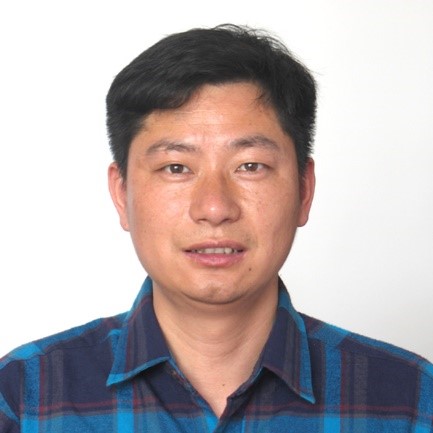
Prof. Yadong Zhang
Yadong Zhang, Cailin Wang,Chunfang Zhao Institute of food crops, Jiangsu Academy of Agricultural Sciences, China
e-mail: zhangyd@jaas.ac.cn
Brief introduction
Prof. Yadong Zhang is the deputy director of the institute of food crops, Jiangsu Academy of Agricultural Sciences, the director of laboratory of good eating quality rice breeding, the consulting expert of National Agricultural Standardization Platform for regional service and extension, the technical committee member of Jiangsu crop standardization, and the 333 outstanding talented young and middle-aged persons of Jiangsu province.
He mainly engages in good eating quality rice breeding and the technology research of rice quality regulation. He has bred four rice varieties with good eating quality including ‘Nanjing 5718’, ‘Nanjing 58’, ‘Nanjing 9036’, and ‘Ningxiangyou 88’’which were released by Jiangsu province. He is the main participant for rice varieties of ‘Nanjing 46’, ‘Nanjing 5055’, ‘Nanjing 9108’, ‘Nanjing 50’, ‘Nanjing 52’, and Nanjing 0212’. He has successively gained dozens of grants of National Natural Science Foundation, Jiangsu provincial key R & D, National financial agricultural technology extension project, and so on. He has won 10 national invention patents, 12 protection rights of plant new varieties, 10 local standards of Jiangsu province, and had 30 publications.
Title: Genetic Diversity, Population Structure and Association Mapping for Eating and Cooking Qualities, Grain Yield-related Traits and Rice Blast Resistance in Asian Cultivated Rice (Oryza sativa L.)
Summary of talk
Asian cultivated rice is the most widely cultivated rice species, mainly distributed in East Asia and Southeast Asia. It is also an important part of rice resources and parental materials for rice cross-breeding, which has high research and utilization value. In this talk, 253 non-glutinous rice varieties consisting of 83 indica and 170 japonica Asian cultivated rice accessions were used for analysis of genetic diversity, population structure, and genetic basis of rice important traits including eating and cooking qualities, grain shapes, yield-related traits, and rice blast resistance. All traits showed a large phenotypic variation and highly significant phenotypic correlations were present between most of the traits. 210 polymorphic SSR, as well as candidate-gene markers, were used for genotyping and amplified 747 alleles with an average of 3.57 alleles per locus, indicating the moderately informative content in the population. The structure, phylogenetic relationship, and principal component analysis indicated a strong population differentiation between indica and japonica accessions, and association mapping was thus undertaken within indica and japonica subpopulations. By genome-wide association mapping, a total of 33and 15 associated loci for eating and cooking qualities and yield-related traits were identified in indica subpopulation, respectively. Total 30, 50, and 9 were detected in japonica subpopulation for eating and cooking qualities, yield-related traits, and rice blast resistance, respectively. Many associated loci were overlapped with the known genes such as starch synthesis-related genes (SSRGs), gran size genes, and rice blast resistance genes. This study illustrated the potential for dissecting minor-effect genetic factors of complex traits in domesticated rice cultivars and provided highly associated markers to facilitate marker-assisted selection for breeding indica or japonica rice varieties.

Dr. Gunvant Patil
Assistant Professor, Texas Tech University, USABrief introduction
Gunvant is Assistant Professor of Molecular Crop Improvement at Texas Tech University. Prior to joining the Tech faculty, Patil served as a research scientist at the University of Minnesota. He also worked as a postdoctoral associate at the University of Missouri-Columbia, and a visiting researcher at the Swedish University of Agricultural Sciences in Uppsala, Sweden.
His lab focuses on genetic engineering and integrated approaches for trait discovery and crop improvement.
Title: Discovery of novel regulatory elements and copy number variation for SCN resistance
Summary of talk
Soybean cyst nematode (SCN) is the most devastating plant‐parasitic nematode. Most commercial soybean varieties with SCN resistance are derived from PI 88788. Resistance derived from PI 88788 is breaking down due to narrow genetic background and SCN population shift. In the present study, whole-genome re‐sequencing of 106 soybean lines was used to define the Rhg haplotypes and investigate their responses to the SCN resistance. The analysis showed a comprehensive profile of SNPs and copy number variations (CNV) at these loci. The presence of more Rhg4 copies confers resistance to multiple SCN races. Interestingly, haplotype analysis of the rhg1 and Rhg4 promoters discovered unique regulatory elements that provided additional levels of resistance. This is the first report revealing the genetic basis of broad‐based resistance to SCN and providing new insight into epistasis, haplotype‐compatibility, CNV, promoter variation, and its impact on broad‐based disease resistance in plants. Currently, we are performing promoter-bashing via CRISPR technology to understand the role of specific regulatory elements involved in SCN resistance.
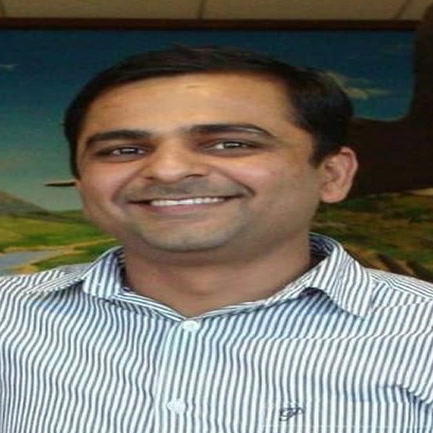
Dr. Suhas Shinde
Associate Graduate Faculty,Department of Biology, West Virginia State University 225 Hamblin Hall, Institute, WV 25112
Email: suhas.shinde@wvstateu.edu, suhas.bio@gmail.com
Brief introduction
Short Bio-sketch:
Education:
Ph.D. Biological and Environmental Science, 2012
University College Dublin, Dublin, Ireland.
M.Sc. Biotechnology, 2005
Dr. B. A. M. University, Aurangabad, MH, India.
B. Sc. Applied Biotechnology, 2003
University of Pune, Pune, MH, India.
B.Sc. Botany, 2002
University of Pune, Pune, MH, India.
Research Interests: Plant Stress Biology, Plant Hormone Signaling, Plant-Environment Interactions, Gene Function Analysis, and Plant Biotechnology
Title: Watermelon Trichome GWAS Identified Tetratricopetide-Repeat Gene Involved in Trichome Morphogenesis, Growth and Development, and Seed Size
Summary of talk
GWAS analysis identified a Tetratricopetide-Repeat (TPR) gene strongly associated with trichome length in watermelon accessions. The orthologue of watermelon TPR identified in Arabidopsis thaliana and reverse genetics approach employed for further functional characterization. The Arabidopsis tpr mutant showed severely distorted trichomes, altered growth, and development, as well as increase in the seed size. Genetic analysis revealed that TPR might interact with a multiprotein complex that mediates actin polymerization or actin-related filament assembling to maintain trichome morphology.
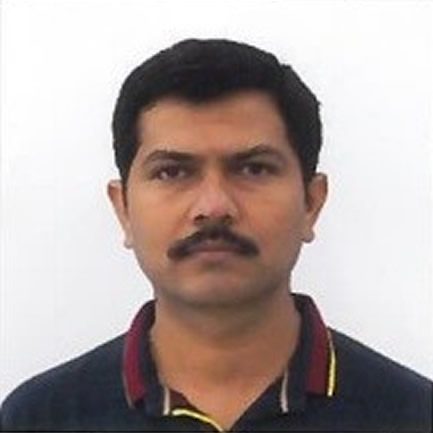
Dr. Suhas Kadam
Postdoctoral Fellow,Division of Plant Science, University of Missouri, USA
suhaskad@gmail.com
Brief introduction
Dr. Suhas Kadam is a research scientist at the University of Missouri, USA. He has completed his MSc from IGKVV Raipur, India, and Ph.D. from SRTMU Nanded, India, and NRCPB New Delhi, India. The major interests are focusing on the identification of new genetic resources for biotic and abiotic stress to improve soybean and ryegrass qualitative and quantitative production. The specific interests to characterize germplasm and genetic analysis of bi-parental population for QTL analysis. Along with the map base cloning of the major QTL and develop the cost-efficient SNPs markers. Identified candidate genes introgress into the elite lines.
Title: Identification of new sources of soybean cyst nematode (SCN) resistance and development of breeder friendly SNPs markers
Summary of talk
Soybean cyst nematode (SCN, Heteroderaglycines Ichinohe) is the most economically important soybean [Glycine max (L.) Merr.] pathogen in the United States because it causes more yield loss than any other disease. The use of resistant cultivars is an effective approach for preventing yield loss. Two major genes, Rhg1 and Rhg4, and many quantitative trait loci (QTL) harboring minor genes have been identified for SCN resistance. These major genes are valuable sources of resistance and have been widely employed for the development of soybean cultivars. However, major gene resistance is not often durable, and there is an immense need for the effective utilization of more horizontal (quantitative) resistance that is derived from minor genes or QTLs. To keep in mind that total of 19,652 publicly available soybean accessions that were previously genotyped with the SoySNP50K iSelectBeadChip was used to evaluate the phylogenetic diversity of SCN resistance genes Rhg1 and Rhg4 in an attempt to identify novel sources of resistance. The re-sequence information of soybean lines was utilized to develop KASPar (KBioscience Competitive Allele-Specific PCR) assays from single nucleotide polymorphisms (SNPs) of Rhg1, Rhg4, and other novel quantitative trait loci (QTL). SNP markers from the Rhg1 gene were able to differentiate copy number variation (CNV), such as resistant-high copy (PI 88788-type), low copy (Peking-type), and susceptible-single copy (Williams 82) numbers. Similarly, markers for the Rhg4 gene were able to detect Peking-type (resistance) genotypes. The phylogenetic information of SCN resistance loci from a large set of soybean accessions and the gene/QTL specific markers that were developed in this study will accelerate SCN resistance breeding programs.
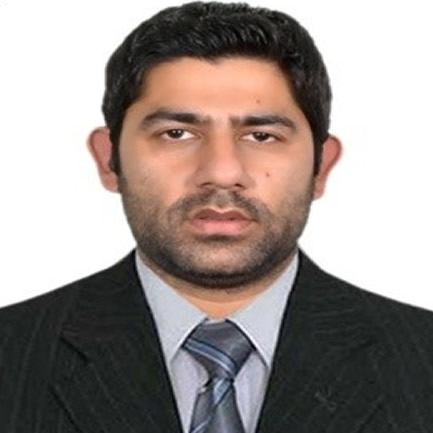
Dr. Javid A. Bhat
Postdoctoral Fellow,National Center for Soybean Improvement, Key Laboratory of Biology and Genetics and Breeding for Soybean, Nanjing Agricultural University, Nanjing 210095, China. javid.akhter69@gmail.com
Brief introduction
Dr. Javaid Akhter Bhat is currently working as Associate Graduate Faculty, State Key Laboratory for Crop Genetics and Germplasm Enhancement, Nanjing Agricultural University. He is the recipient of Research Associateship at Council of Scientific and industrial research, Human Resource Development Group, CSIR Complex, PUSA, New Delhi in 2017 (2016-1018). He is mainly engaged in Plant Genetics, Crop Biotechnology, Functional and Applied Genomics, and Computational Biology; In addition, he is engaged in Plant Stress Physiology, Signalling, and Genetics particularly for the case of abiotic stresses including heavy metals/metalloids. In recent years he has published more than 60 papers in many well-reputed SCI Journals such as Journal of Experimental Botany; Plant Molecular Biology, Plant Science, Experimental and Environmental Botany, BMC Genomics, Genomics, Physiologia Plantarum, Frontiers in Genetics, Frontiers in Plant Science, Journal of Plant Physiology, Microbiological Research, Scientific Reports, Applied Biochemistry, and Biotechnology and Genes, etc. In addition, he has also received many awards in his short research career such as Young Scientist Award (Received in the “International Conference on Food &Agriculture” Held during March 29-31, 2018 in Dhanbad, India; Received from Society of Bioinformatics and BiologicalSciences-SBBS in 2017), Distinguished Scientist Award (Received from Society for Agriculture Innovation &Development, Ranchi in 2018), Outstanding/Best Thesis award 2017 (Best Thesis award 2017 awarded by Society for Scientific Development in Agriculture & Technology-SSDAT), and Best Oral Presentation Award (Best Oral Presentation received in the “International Conference on Food &Agriculture” held by Endling Conferences during March 29-31, 2018 in Dhanbad, India), etc. Dr. Javaid is also working as Associate guest editor and reviewer of many well-reputed SCI international journals.
Title: Advances and Challenges in Genomics-Assisted Breeding of Complex Traits in the Era of Next-Generation Sequencing and High-Throughput Phenotyping

Dr. Atul Prakash Sathe
Senior Research AssociateDepartment of Plant Molecular Biology & Biotechnology, Indira Gandhi Krishi Vishwavidyalaya, Raipur, India
Brief introduction
Dr. Atul Prakash Sathe is a Senior Research Associate at Department of Plant Molecular Biology & Biotechnology, Indira Gandhi Krishi Vishwavidyalaya, Raipur, India. He obtained his PhD degree from Chinese Academy of Agricultural Sciences, Beijing, China and master’s degree from Tamil Nadu Agricultural University, Coimbatore, India.
Title: Map-based cloning and functional characterization of spotted leaf mutant in rice
Summary of talk
Spotted leaf mutants show typical necrotic lesions that appear spontaneously in the absence of any pathogen attack. These mutants are often characterized to exhibit programmed cell death (PCD) and activation of plant defense responses resulting in enhanced disease resistance to multiple pathogens. In our work we reported a novel spotted-leaf mutant, spl40 which was derived from the EMS mutagenesis of indica rice cultivar Zhongjian-100. We carried out phenotypic characterization, measurement of agronomic traits, physiological and biochemical characterization, detection of cell death occurrence and ROS accumulation, evaluation of disease resistance, genetic analysis and mapping of the mutation, functional complementation and subcellular localization. This study provides evidence for enhanced disease resistance response and physiobiochemical changes exhibited by spl40, along with its genetic characterization.

Dr. Vikas Kumar Singh
Regional Breeding Lead,South Asia Coordinator, IRRI-SA Hub and ICRISAT Campus, Patancheru, Hyderabad, Telangana - 502324, India
Email: v.k.singh@irri.org
Brief introduction
Professionally, Vikas is a plant breeder and currently working as IRRI’s Regional Breeding lead for South Asia and Coordinator for IRRI-South Asia Hub, located in ICRISAT, Campus Hyderabad, India. Vikas possess eight years of research experience in international agriculture. He is leading a team of 10+ scientists across different disciplines including breeding, genomics, seed system, pathology etc. His research is focused on germplasm characterization, sequencing-based trait mapping and innovating breeding. He has identified candidate genes for several economically important traits in many crops and developed new trait mapping and breeding methodologies for developing the next generation of climate-resilient varieties. He has published +50 research papers in high impact journals like, Trends in Plant Science, Plant Biotechnology Journal, Current Opinion in Plant Biotechnology, Scientific Reports etc.
Summary of talk
Title: Superior haplotype-based (Haplo-GS) genomic selection in rice
Authors: Vikas K Singh, Uma Maheshwar Singh, Pallavi Sinha, and Arvind Kumar
Summary : Increasing population and rapid decline in cultivable land emphasize the need for enhancing yield, especially under both favorable and unfavorable conditions. The conventional method of trait mapping is time-consuming and requires additional resources for deployment in crop improvement due to the complex nature of major agronomic and economic traits. Genetic gains from current breeding methods are lower than required to achieve the target yield increase in different crops. The use of haplotype diversity for important traits could potentially increase genetic gains of ongoing crop breeding programs. We propose an integrated robust and comprehensive breeding approach, ‘Haplo-GS’ (Superior haplotype-based genomic selection) involving, (i) Germplasm establishment and sequencing, (ii) Harnessing haplotype diversity, (iii) Haplotype-based breeding and (iv) Haplo-GS powered by speed-breeding for designing tailored crops suiting future food and nutritional needs for different crops.

Dr. Rupesh Tayde
Kyungpook National University,Daegu, South Korea.
Brief introduction
Rupesh Tayade is Research Scholar at Kyungpook National University, based in Daegu, South Korea, Department of Applied Bioscience, Plant Breeding and Genetics Lab. Rupesh Tayade has a Ph.D. from the Kyungpook National University, South Korea, and has 11 years of research experience at Bejo Sheetal seeds now Kalash seeds Pvt. Ltd, Indian Agriculture Research Institute New Delhi, Advanta Limited, Hyderabad India, and at Kyungpook National University (since 2016).
Title: Application of Genomic Tool in Soybean Breeding for Seed Starch Content Improvement
Summary of talk
Soybean (Glycine max (L.) Merr.) is one of the major oilseed and animal feed crops and among the world's top annual cultivated legumes. The soybean comprises a core collection of wild accessions which represents the total genetic diversity of the present domesticated soybean. Utilizing this potential genetic variability resource in breeding programs possibly plays a crucial role in conserving as well as constructing improved soybean cultivar for desired traits. The seed starch content (SSC) in soybean is very low and modifying it may influence the taste, softness, and chewiness of the soybean food which ultimately can improve the utility of the soybean products. To improve the quality and quantity of soybean SSC it is necessary to understand genetic and molecular mechanisms in seeds. We used 313 wild soybeans for Genome-wide association study (GWAS) to identify the genomic regions associated with the SSC. The GWAS was conducted across three environments (2016 2017 and 2019) based on Affymetrix Axiom® 180k SoyaSNP array data with MLM and FarmCPU model. The MLM and FarmCPU model identified 26 SNPs which showed highly significant associations with SSC across three environments and combined data. Besides, total of 70 putative candidate genes was identified. Furthermore, we compared the expression pattern over the seed development stages for candidate genes using publicly available RNA-seq datasets. The identified SNPs, candidate genes, and diverse variation of SSC in wild soybeans will serve the further application.
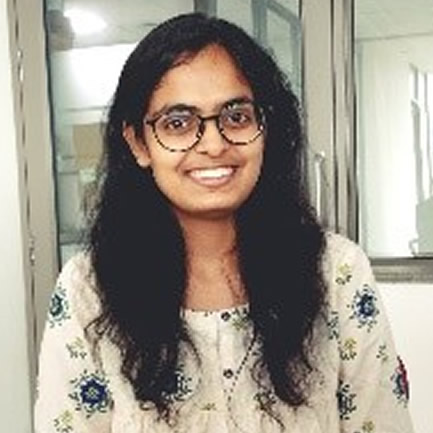
Ms. Surbhi Kumawat
Junior Research FellowDepartment of Biotechnology, Punjab University, Chandigarh, India.
Brief introduction
Ms. Surbhi Kumawat is a Ph.D. student at Panjab University, Chandigarh, India. She obtained her master's degree from The IIS University, India. She was awarded a gold medal for M.Sc Botany and secured 74th rank in CSIR-UGC NET-JRF (June 2017). Her expertise includes mutation breeding, aquaporins, and genome editing in rice.
Title: Application and advances in genome editing in plants
Summary of talk
Recent advancement in genome editing technology provides enormous opportunity to make desired changes in the genome. The world has already started witnessing the applicability of genome editing in health, agriculture, and industries. Apart from applied aspects, genome editing provides precise methods for a better understanding of functional genomics and biological phenomenon. With the innovation of CRISPR/Cas based genome editing, numerous versatile tools and techniques have been developed, which has further widened the applicability of the approaches. The present webinar will shed light on recent developments in CRISPR/Cas based genome editing technique and its successful application in crop science.

Dr. Gaurav Agarwal
Postdoctoral Research associate Department of Plant Pathology,University of Georgia, Tifton, GA, USA.
Brief introduction
Gaurav is currently working as a Postdoctoral Research associate in the Department of Plant Pathology, University of Georgia, Tifton, GA, USA. Gaurav obtained his PhD degree in Botany from Chaudhary Charan Singh University, Meerut (UP) while working at the Department of Plant Physiology, IARI, New Delhi. He has been currently working at the UGA since July 2016 and has contributed to the identification of important disease traits like leaf spot and TSWV is peanut. His findings include genetic and QTL mapping using high-throughput genome sequencing of RIL populations to identify genes underlying the disease. He also contributed to the development of reference genome assembly of an allotetraploid peanut, Tifrunner. Before joining UGA, Gaurav worked at ICRISAT as a Project Scientist for almost three years. During his tenure at ICRISAT, he also collaborated at University of Missouri and worked there for five months and contributed to soybean genomics. At ICRISAT, his research was centered on identification of markers, candidate genes and tissue-specific genes in response to biotic and abiotic stress in legume crops. He contributed significantly to the development of the first peanut 58K SNP Array chip and on aflatoxin responsive peanut genotypes to identify aflatoxin responsive genes and SNPs associated with these genes. He also contributed to the genome assembly of diploid A-genome progenitor of peanut (Arachis duranensis).
QTL Mapping of Leaf Spot and Tomato Spotted Wilt Virus Resistance in Peanut (Arachis hypogaea)
The last decade has witnessed rapid progress in genome sequencing that greatly helped in high‐resolution trait mapping, candidate gene discovery and breeding applications in many legumes. Genomics‐assisted breeding (GAB) has demonstrated great potential for accelerated development of improved varieties including peanut. However, the earlier efforts towards identifying linked markers for leaf spot and TSWV resistance were based on SSR‐based genetic maps using S- (SunOleic 97R x NC94022) and T‐population (Tifrunner x GT‐C20).Whole‐genome resequencing (WGRS) of mapping populations has facilitated development of high‐density genetic maps essential for fine mapping and candidate gene discovery for traits of interest in crop species. Leaf spots, including early leaf spot (ELS) and late leaf spot (LLS), and Tomato spotted wilt virus (TSWV) are devastating diseases in peanuts causing significant yield loss. We used WGRS data on two recombinant inbred line (RIL) populations and developed SNP ‐based genetic and bin maps, and conducted QTL mapping, candidate gene discovery and marker validation for ELS, LLS and TSWV. The two RIL (T- and S-) populations contained 91 and 140 individuals. T-population was used to develop the first sequence‐based high‐density map with 8869 SNP s assigned to20 linkage groups with a map length of 3120 cM. In S-population, a recombination bin-based genetic map was constructed, with 5,816bins and 20 linkage groups covering a total length of 2004 cM using Kosambi’s mapping function. Using these genetic and bin maps we mapped major QTLs for leaf spot and TSWV disease resistance.
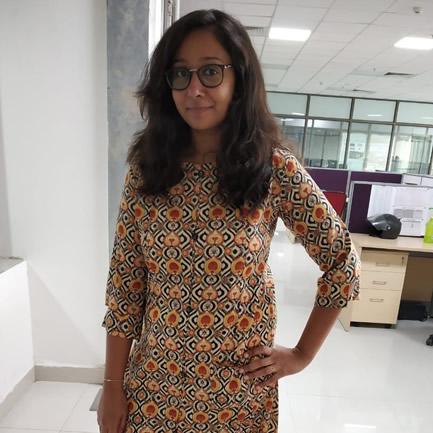
Ms. Vacha Bhatt
Ph.D. Scholar,Department of Botany, Savitribai Phule Pune University, Pune, India .
Brief introduction
Vacha Bhatt is a Ph.D. scholar at the Department of Botany, Savitribai Phule Pune University, India. She has completed her bachelor's and master’s degree from Saurashtra University, Gujarat, India. She has served as Project assistant level II at Central Salt and Marine Chemical Research Institute (CSMCRI), Gujarat, India. She has also worked as a lecturer in U. B. Bhagat Science College Amreli, Gujarat, India.
Title: Rice bran oil; prospective resource as a functional food
Summary of talk
Being staple food rice is most widely consumed worldwide. Rice bran is an important byproduct of the rice milling industry. It is well known for its nutrient-rich composition, easy availability, low cost, and high antioxidant potential. World annual production of rice bran is around 30 million tonnes (2016) still a very little amount of rice bran is used for oil production due to its drawback of oxidative rancidity during storage of rice. This Webinar will provide complete insights on nutritional composition of rice bran oil which makes it health oil and the major constrains behind the large scale production of rice bran oil.
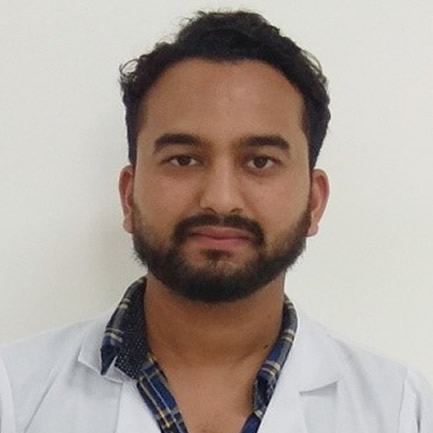
Mr. Gaurav Raturi
Junior Research Fellow,Department of Biotechnology, Punjab University, Chandigarh, India .
Brief introduction
Mr. Gaurav Raturi is currently working as a Junior Research Fellow at National Agri-Food Biotechnology Institute (NABI), Mohali, India. He did his Masters in Microbiology and after qualifying Joint-CSIR-UGC-JRF examination for Ph.D. he joined NABI. His interests span areas of silicon biology, transporter proteins particularly aquaporins, and genomics of silicate solubilizing bacteria.
Title: Silicate solubilizing bacteria: Opportunities to move toward sustainable agriculture
Summary of talk
Silicon is the quasi-essential and second most abundant (27%) element in the earth’s crust, but the poor solubility makes it unavailable for plants. The supplementation of silicon in plants can improve the plant fitness against the unfavorable condition, can impart resistance against diseases, insects and can mitigate the effect of abiotic stresses. Silicon present in the soil as an unavailable or insoluble form such as silicate of calcium, iron, aluminium, magnesium, etc. Monosilicic acid (Si(OH)4) is recognized as the only form of silicate that can be easily absorbed by the plant. Weathering of the rocks supplement the soil with monosilicic acid, however, the availability is dependent on different factors such as temperature, pH, redox potential, water content, and activity of different microorganisms. However, the molecular mechanism involved in solubilization is still unclear, but the different suggestive mechanisms that can be adopted by microorganisms for solubilization may include the production of organic and inorganic acid, nucleophilic attack, production ligands, and extracellular polysaccharides. The silicate solubilizing bacteria is not only capable of solubilizing silicate, phosphate, and potassium but also can decrease the chemical toxicity in the soil hence can be used as a biofertilizer to increase soil fertility. The use of biofertilizers can reduce the dependency of chemical fertilizers like potash. Most of the silicate solubilizing bacteria belong to Bacillus, Proteobacteria, Enterobacter, Janthinobacterium, Aminobacter, Pseudomonas, etc. Until now, the implementation of Si in crops to enhance productivity remains unexplored. Further, the use of silicate solubilizing based fertilizer in this aspect might be useful to overcome the loss in crop production. The present talk will discuss the current understanding of silicate solubilizing bacteria and the possibilities to efficiently explore the knowledge for sustainable agriculture.

Mr. Amit Kumar
Junior Research Fellow,National Agri-Food Biotechnology Institute (NABI), Mohali, India .
Brief introduction
Amit Kumar is a junior research fellow at National Agri-Food Biotechnology Institute (NABI), Mohali, India. He pursued his B.Sc from Sri Venkateswara College, University of Delhi and completed his M.Sc. from the department of plant molecular biology, university of Delhi south campus. He has been conferred with CSIR-NET, GATE, and DBT JRF.
Title: Advanced mutagenesis approaches for reverse genetics and crop improvement
Summary of talk
Mutation Breeding is among the most successful approaches to widen genetic diversity and achieve the required crop improvement. In this regard, induced mutagenesis is one of the most effective tools for the generation of genetic diversity and the identification of regulatory genes with economically significant aspects. Mutation can be created through several approaches, including physical, chemical, and insertional. Using advanced next-generation technologies, mutant lines can be characterized and mapped. through my talk, I will address different types of mutations, different agents of mutation, and about different Approaches to map the mutation.

Ms. Gunashri Padalkar
Junior Research Fellow,Department of Biotechnology, Punjab University, Chandigarh, India.
Brief introduction
Ms. Gunashri Ganesh Padalkaris currently working as a Junior Research Fellow at National Agri-Food Biotechnology Institute, Mohali, India. Her research work is focused on improvement of soybean crop using genome editing approaches.She has obtained her master's degree in Biotechnology from Deogiri College, Aurangabad.Ms. Padalkarhas also qualified CSIR NET Dec 2017 with all India rank 34, DBT BET, and GATE examinations.
Title: Food-grade soybean: Opportunity and Challenges
Summary of talk
The nutritional and medicinal importance of soybean has been proven through extensive research over time. These properties of soybean could prove beneficial in the elimination of hidden hunger in the growing population worldwide. Although the acceptance of soybean as a food grain by masses have potential, the presence of anti-nutritional factors and the presence of beany flavor makes it challenging. The elimination of these traits could help in the development of food-grade soybean varieties. In addition, soybean is a major oil producing crop in the world. Alteration of fatty acid composition of soybean oil to produce a healthier and more stable product will improve its quality and functionality. The present talk will discuss nutritional potential of soybean and challenges for the development of food-grade cultivars.

Mr. Yogesh Sharma
Junior Research Fellow,National Agri-Food Biotechnology Institute (NABI), Mohali, India.
Brief introduction
Yogesh Sharma is a CSIR Research fellow at the Agri-Biotechnology group in National Agri-Food Biotechnology Institute, Mohali, India. He is pursuing a Ph.D. in studying the molecular mechanism of solute specificity in plant aquaporin. His group is dedicated to aquaporin’s role in metalloid uptake. The group research interests are rooted in exploring the natural diversity of aquaporins for the implications of selective transport of beneficial metalloids in plants.
Title: Challenges and opportunities of computational intervention in aquaporin studies
Summary of talk
Aquaporins, a class of gated selective channels regulate the transport of many small solutes. Mechanistic insight into the role of these channels is of great interest for different domains of life science. However, very little is known about the structural and functional attributes of aquaporin. Limited availability of high-resolution protein tertiary structure is one of the major constrains in aquaporin research. Like many other membrane proteins, efforts in aquaporin structural elucidations are limited by challenges in purification and crystallization of highly hydrophobic peptides. Employment of advanced computational methods for homology-based structure prediction is thus promising for these proteins. A greater atomic level understanding of physical mechanisms and dynamic process of aquaporins can be drawn by molecular dynamic simulation. Aquaporin simulations can be explored to understand solute specificity and transporters. Although Ligand force-fields are still limited to H, C, N, O, S, F, P, Cl, Br, and I, careful parameterization of metals and metalloids like Si, As, B, and Ge can be helpful in understanding metal/ metalloid transport. The present talk will discuss recent computational advances helpful to better understand structural and functional regulation of plant aquaporins followed by a brief methodology for easy system set up to study membrane proteins.

Mr. Rushil Mandlik
Ph.D. Scholar,Department of Biotechnology, Punjab University, Chandigarh, India.
Brief introduction
Rushil Mandlik is a Ph.D. student at Punjab University, Chandigarh, India. He obtained his bachelor’s degree from Mahatma Phule Krishi Vidyapeeth, Rahuri, India and masters degree from Tamil Nadu Agricultural University, Coimbatore, India.
Title: Silicon transport and deposition in plants.
Summary of talk
Aquaporins, a class of gated selective channels regulate the transport of many small solutes. Mechanistic insight into the role of these channels is of great interest for different domains of life science. However, very little is known about the structural and functional attributes of aquaporin. Limited availability of high-resolution protein tertiary structure is one of the major constrains in aquaporin research. Like many other membrane proteins, efforts in aquaporin structural elucidations are limited by challenges in purification and crystallization of highly hydrophobic peptides. Employment of advanced computational methods for homology-based structure prediction is thus promising for these proteins. A greater atomic level understanding of physical mechanisms and dynamic process of aquaporins can be drawn by molecular dynamic simulation. Aquaporin simulations can be explored to understand solute specificity and transporters. Although Ligand force-fields are still limited to H, C, N, O, S, F, P, Cl, Br, and I, careful parameterization of metals and metalloids like Si, As, B, and Ge can be helpful in understanding metal/ metalloid transport. The present talk will discuss recent computational advances helpful to better understand structural and functional regulation of plant aquaporins followed by a brief methodology for easy system set up to study membrane proteins.
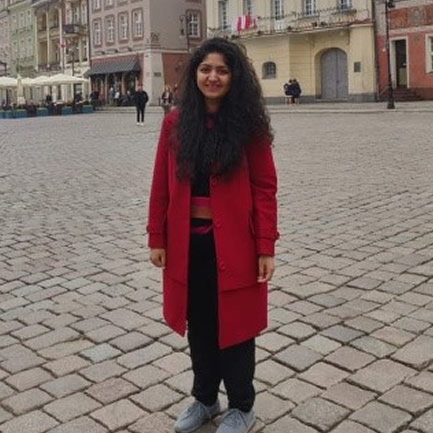
Ms. Alisha
Ph.D. Scholar,Ph.D. Scholar, Adam Mickiewicz University, Poland.
Brief introduction
Ms. Alisha did her Bachelor's in Biotechnology Hons. from DAV College, Chandigarh and master’s in Biotechnology Hons. from Panjab University, Chandigarh, India. She worked as Senior Research Fellow at Indian Agriculture Research Institute, New Delhi, India in a project entitled ‘Molecular breeding for improvement of tolerance to biotic and abiotic stresses, yield and quality traits in crops (Mustard)’. After working there for 6 months, she moved then to Poznań, Poland as a Ph.D. student under a project entitled ‘Uncovering the role of SPL3 and SPL4 transcription factors in Marchantia polymorpha’. Her interest includes role of transcription factors in plants.
Title: Marchantiapolymorpha as an emerging model plant system.
Summary of talk
“The Arabidopsis era is slowly fading away” (Tena, 2018). Now the trend of plant biology has started to shift from Arabidopsis to ancient plants. The shift is because of simpler genomes with lower genetic redundancy observed in the ancient plants. The increase in data availability for ancient non-vascular plants like Marchantiapolymorpha and Physcomitrella patens has opened the path for studying the evolutionary history of land plants in detail. The liverworts diverged from land plants about 450 million years ago, and M. polymorpha represents one of the species of first land plants. M. polymorpha has been gaining increased attention due to the recent availability of its genome sequence, its dominant haploid gametophytic life cycle, and ease of genetic transformation. Hence, these features make Marchantiaas a potential model plant system for the study of both evolutionary and developmental biology in detail. In the present webinar, genomic resources and Marchantia’sfeatures useful for molecular biology and basic research will be discussed.

Mr. Himanshu Yadav
Project Fellow,National Agri-Food Biotechnology Institute (NABI), Mohali.
Brief introduction
Himanshu Yadav is currently working as a Project fellow at National Agri-Food Biotechnology Institute (NABI), Mohali. He obtained his Bachelors's and Master’s Degree from Gautam Buddha University, Greater Noida. Currently, he is working to improve the nutritional value of soybean using CRISPR/cas9 approach.
Title: Advances, applications, and challenges for genome editing approaches in legume.
Summary of talk
Legume crops are important source of protein, minerals, and fibers worldwide. Genetic improvement in legumes is highly desired to eradicate malnutrition particularly from underdeveloped and developing countries. In this regard, recent advances in genome editing technology provide excellent opportunity to make desired genomic changes to improve nutritional quality and productivity of crop plants including legumes. For the efficient exploration of genome editing tools, construct delivery methods are very important. However, genetic transformation methods are not yet well optimized for the major legume crops. More critical situation is with minor legume crops where genetic transformation has never been achieved. However, DNA free methods of genome editing provide optional ways to achieve desired manipulations. In the present webinar, recent advancements, applications, and various challenges to improve legume crops using genome editing approaches will be discussed.

Trevor Weiss
University of MinnesotaBrief introduction
Hi, my name is Trevor Weiss. I am a second year Ph.D. student in Feng Zhang's Lab at the University of Minnesota.
Summary of talk
In recent years, Setaria viridis has been developed as a model plant to better understand the C4 photosynthetic pathway in major crops. With the increasing availability of genomic resources for S. viridis research, highly efficient genome editing technologies are needed to create genetic variation resources for functional genomics. Here, we developed a protoplast assay to rapidly optimize the multiplexed CRISPR/Cas9 system in S. viridis. Targeted mutagenesis efficiency was further improved by an average of 1.4-fold with the exonuclease, Trex2. Distinctive mutation profiles were found in the Cas9_Trex2 samples with 94% of deletions larger than 10 bp, and essentially no insertions at all tested target sites. Further analyses indicated that 52.2% of deletions induced by Cas9_Trex2, as opposed to 3.5% by Cas9 alone, were repaired through microhomology-mediated end joining (MMEJ) rather than the canonical NHEJ DNA repair pathway. Combined with the robust agrobacterium-mediated transformation method with more than 90% efficiency, the multiplex CRISPR/Cas9_Trex2 system was demonstrated to induce targeted mutations in two tightly linked genes, svDrm1a and svDrm1b, at the frequency ranging from 73% to 100% in T0 plants. These mutations were transmitted to at least 60% of the transgene-free T1 plants with 33% of them containing bi-allelic or homozygous mutations in both genes. This highly efficient multiplex CRISPR/Cas9_Trex2 system makes it possible to create a large mutant resource for S. viridis in a rapid and high throughput manner, and has the potential to be widely applicable in achieving more predictable and deletion-only MMEJ-mediated mutations in many plant species.
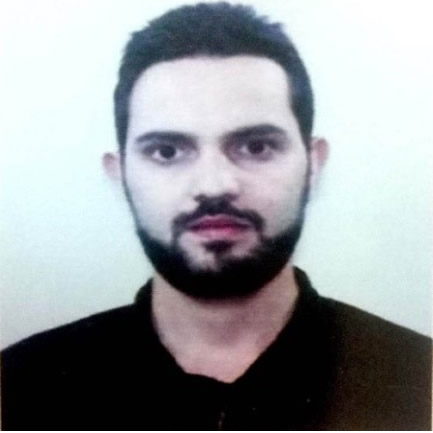
Zahoor Ahmad Mir
Plant microbe interaction lab,National Institute for Plant Biotechnology, New Delhi, India.
Brief introduction
I, Zahoor Ahmad Mir, have been working as a M.Sc student at University of Madras, Chennai, India, from August 2009 to 2011. My M.Sc. 2nd year project work was based on Biodegradation of Endosulfan (cyclo-diene organochlorine) by Indegenous Pseudomonas species MSCASBT1, with particular emphasis to screen different microorganisms having the ability to degrade Endosulfan. I was awarded Proficiency in Urdu language by the University of Madras, I was selected for Enterpreunershinp Biotechnology Development program by the Government of India. I have worked at OIE Reference Laboratory for WTD (World animal health organization) on the topic Antibacterial activity of Marine Actinomycetes against various fish and shrimp pathogens, from June 2012 to January 2013 under the supervision of Dr. A.Sait Sahul Hameed, University of Thriruvaluvar, Vellore, India. I was appointed as a guest lecturer at C. Abduul Hakeem College of Arts and Science Melvisharam Tamil Nadu, During my M.Sc program, I wrote up some research projects in the field of Biodegradation, with a better understanding of the subject. I actively participated in the lab Seminars and Departmental Journal Club meetings. I also worked as SRF (Senior Research Fellow) at the National Research Center on Plant Biotechnology New Delhi. I was working on the topic development of thermo-tolerant transgenic wheat, from the period December 2014 o January 2015. In the month of May 2015, I joined as SRF in the project development of Alternaria resistant Indian mustard under the guidance of Dr. Anita Grover and I enrolled for the Ph.D. program at Amity University Noida, under MoU between ICAR-Amity University and this year I just completed my bench work and know I am in the process of thesis writing. In my tenure of Ph.D., we have developed NPR1 and Chitinase IV transgenic lines of Brassica juncea.
Title: Development of Alternaria resistant Brassica juncea transgenic plants by Over-expression of Chitinase class IV gene
Summary of talk
Legume crops are important source of protein, minerals, and fibers worldwide. Genetic improvement in legumes is highly desired to eradicate malnutrition particularly from underdeveloped and developing countries. In this regard, recent advances in genome editing technology provide excellent opportunity to make desired genomic changes to improve nutritional quality and productivity of crop plants including legumes. For the efficient exploration of genome editing tools, construct delivery methods are very important. However, genetic transformation methods are not yet well optimized for the major legume crops. More critical situation is with minor legume crops where genetic transformation has never been achieved. However, DNA free methods of genome editing provide optional ways to achieve desired manipulations. In the present webinar, recent advancements, applications, and various challenges to improve legume crops using genome editing approaches will be discussed.
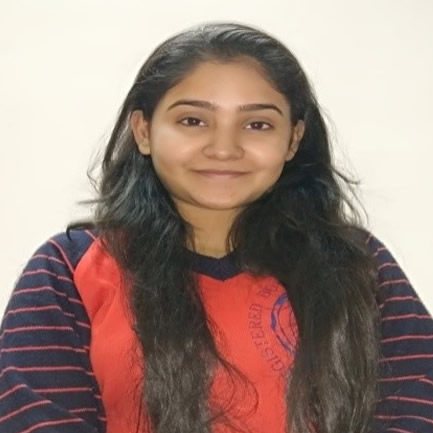
Ms. Nitika
Junior Research Fellow,National Agri-Food Biotechnology Institute (NABI) Mohali, India.
Brief introduction
Ms. Nitika is currently working as a Junior Research Fellow at National Agri-Food Biotechnology Institute (NABI), Mohali, India. Her research work is focused on the metalloids those are beneficial and toxic to plant as well as animals. Consequently, she works on metalloid transporter aquaporins. Ms. Nitika has done her Post-Graduation study from the Department of Botany, Delhi University. She has recently qualified CSIR-JRF(NET), (2019), and GATE (2019) examination.
Title:Aquaporins transport system
Summary of talk
Aquaporins have long been considered as water transporters. However, apart from transporting water molecules across the biological membrane, aquaporins are found to be involved in the transport of many uncharged small solutes like urea, CO2, and several metalloids. Aquaporin’s role in transporting metalloids is becoming popular as it can transport beneficial elements such as silicon as well as toxic elements such as arsenic, antimony selenium, and aluminum. Recent studies have also shown the involment of aquaporins in the transport of signal molecules like NO and H2O2, and metals like aluminium. Such reports suggest the possibility of much wider range of solutes compared to what we have known today that can be transported through the aquaporins. The present webinar will provide insights of the aquaporin transport system, solute specificity, and its functional role in plants.
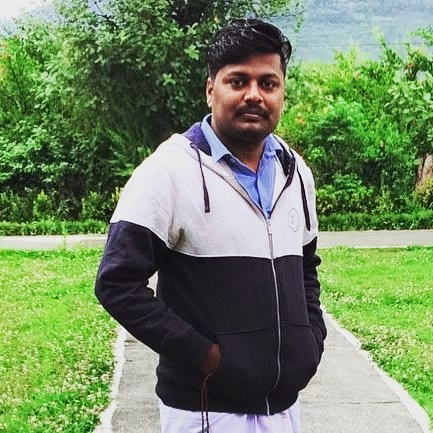
Mr. Vinaykumar Rachappanavar
Ph.D. Scholar,Department of Seed Science and Technology Dr. Yashwant Singh Parmar University of Horticulture and Forestry Himachal Pradesh .
Brief introduction
Mr. Vinay Kumar Rachappanavar is currently a Ph.D. scholar at the Department of Seed Science and Technology Dr. Yashwant Singh Parmar University of Horticulture and Forestry, Himachal Pradesh. His research work is focused on the seed viability and seedling vigor related aspects of horticultural crops. He also works on silicon uptake and subsequent silicon derived benefits in horticulture as well as vegetable crops specific to India.
Title: Silicon: yet to explore benefits for perennial horticulture crops
Summary of talk
The talk will discuss the beneficial role of silicon (Si) reported in thousands of studies published over a couple of decades. Silicon is one of the most abundant element having omnipresence on the earth's surface crust. Even though, we need to provide Si supplementation to crops for better productivity. Since most of the soil types are depleted with the plant available form of Si (silicic acid). In this regard, efforts are being made to understand how plant uptake Si from the soil solution and what is the exact role of silicon in plants. The talk will discuss some of the seminal studies defining the role of silicon and will address issues related to the efficient exploration of silicon derived benefits for perennial horticulture crops.
